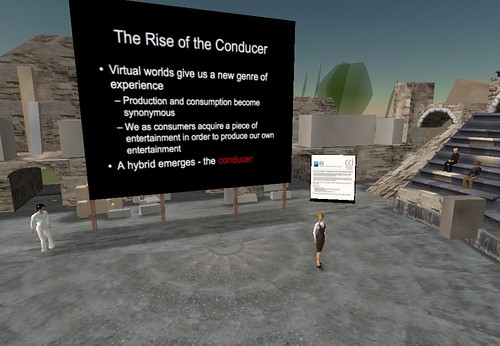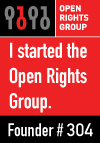This is a story that has all the makings of a geek legend. A stupid bureaucrat in the city of Tuttle, Oklahoma, noticed that the website belonging to the city that he administers was missing. What was in its place? An Apache Server page. The bureaucrat freaked. Imagine what he must have thought when he saw the
test page, "Them Indians are attacking our website!" What followed was an email to the providers of the server software,
CentOS, a Linux distribution. The email exchange is presented
in its entirety here, but there are some jewels of unintended comedic genius:
"Who gave you permission to invade my website and block me and anyone else from accessing it??? Please remove your software immediately before I report it to government officials!! I am the City Manager of Tuttle, Oklahoma."
Translation: I do not know anything, but I am a bureaucrat in Oklahoma, FEAR ME!
"Get this web site off my home page!!!!!
It is blocking access to my website!!!!~!"
Multiple exclamation marks are a sure sign of a diseased mind.
"I do not want this software!!!! This is the City of Tuttle, Oklahoma. Get rid of this software!!!!!
Second notice!"
Translation: Feel my wrath! Contemplate your doom and despair!
"Unless this software is removed I will file a complaint with the FBI."
Translation: Homeland Security will be there right away to arrest you all filthy injuns.
"No one outside this building has complained about this problem."
Could it be that *GASP* nobody reads your page?
"You have officially been notified and given an opportunity to correct the situation without legal intervention. The rest is up to you!"
You can see at this point that he is finally getting the impression that something is not right. A memory of a thought may be stirring in his brain.
"I am computer literate! I have 22 years in computer systems engineering and operation. Now, can you tell me how to remove "your software" that you acknowledge you provided free of charge? I consider this "hacking". I have no fear of the media, in fact I welcome this publicity."
Turning the computer on and off for 22 years does not qualify as "computer systems engineering".
"I am sorry that we had to go through the process and accusations to get the problem resolved. It could have been resolved a lot quicker if the initial correspondence with you provided the helpful information that was transmitted in the last messages. My initial contact with VIDIA disallowed any knowledge of creating the problem."
Translation: You are guilty of my stupidity. Make it stop.
 (Via Carolina Botero) Spanish courts have delivered the third ruling in favour of Creative Commons (more accurately, copyleft licences in general) and against collecting agencies. The Spanish music collecting agency, the SGAE, has just lost another case brought against a bar for not paying licence fees. The previous cases can be found in Spanish here and here.
(Via Carolina Botero) Spanish courts have delivered the third ruling in favour of Creative Commons (more accurately, copyleft licences in general) and against collecting agencies. The Spanish music collecting agency, the SGAE, has just lost another case brought against a bar for not paying licence fees. The previous cases can be found in Spanish here and here.
 del.icio.us
del.icio.us











